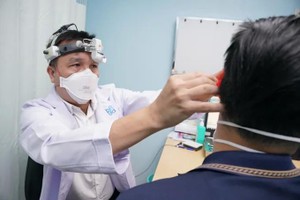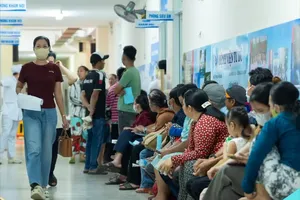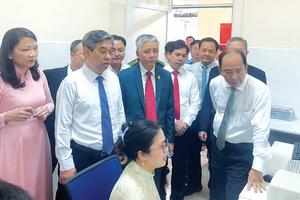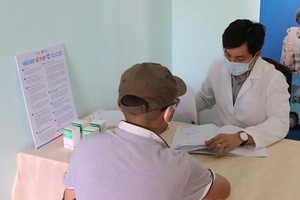
Welcoming nearly 2,000 patients per day, Hanoi Heart Hospital decided to use IT to link such tasks as receiving new patients, diagnosing or hospitalizing them, and collecting hospital expenses so that they can be synchronized effectively. According to Ms. Vu Quynh Nga, Deputy Director of this hospital, this application, along with digital hospital records, has helped doctors quickly grasp patients’ medical history. In addition, patients coming to the hospital now do not need to carry a large stack of medical documents, which is a great convenience. The use of health insurance card is smoother as well.
As stated by Associate Prof. Dr. Nguyen Hoang Bac, Director of the University Medical Center Ho Chi Minh City (HCMC), the implementation of IT in operation has become his hospital’s strong point. To modernize working activities, this hospital has introduced digital medical records, digital bills, digital kiosks, virtual payment for hospital expenses. “Our hospital has always tried our best to use modern IT utilities to provide patients with the utmost comfort and earn their long-lasting trust”, said Dr. Bac.
Despite the above positive stories, the application of IT in healthcare activities is facing various problems. Dr. Pham Xuan Dung, Director of the HCMC Oncology Hospital, shared that because there is absolutely no one specific system or software piece for all hospitals in the country to install, it is nearly impossible to form a link and share information among these medical institutes.
Sharing the same concern, a director of a district hospital affirmed that there is a true need to implement IT in daily operation of hospitals to improve working performance and management tasks. However, it is essential to prepare a clear schedule and provide sufficient finance support so that the human resources are able to successfully operate IT systems and software. The synchronization of currently used software for digital medical records, hospital management, data storage, image transfer, and experiment results should also be considered.
Associate Prof. Dr. Tang Chi Thuong, Deputy Director of the HCMC Department of Health, said that at the moment, most hospitals have initiated the project to apply IT in their daily operation, yet the application level varies depending on the ability of their own human resources. “It is quite challenging to hire a suitable IT employee in the medical field. What is more, the infrastructure of each hospital is not the same, leading to the fact that low-income ones are not able to financially support this project”, added Dr. Thuong.
The Ministry of Health regulates that the implementation of IT in medical institutes includes the use of infrastructure, management software, hospital information system (HIS), radiology information system – picture archive and communication system (RIS-PACS), laboratory information system (LIS), electronic medical record (EMR).
Mr. Tran Quy Tuong, Head of the Information Technology Department under the Ministry of Health, reported that all hospitals in Vietnam are now using IT in their diagnosis and treatment as well as hospital information management; 92.3 percent of these hospitals are running LIS; 86.2 percent have administration management software to monitor electronic documents and emails.
He also explained that certain difficulties hospitals are facing include the inability to synchronize information among software systems, low capable human resources to operate these applications, lack of determination from the board members, financial burden from software cost and infrastructure upgrade, challenges in using digital signatures for both doctors and patients. Adding to that, at present, the Ministry of Health has not considered IT expenses as a part of medical service fees, leading to a more serious insufficiency of budget.
























